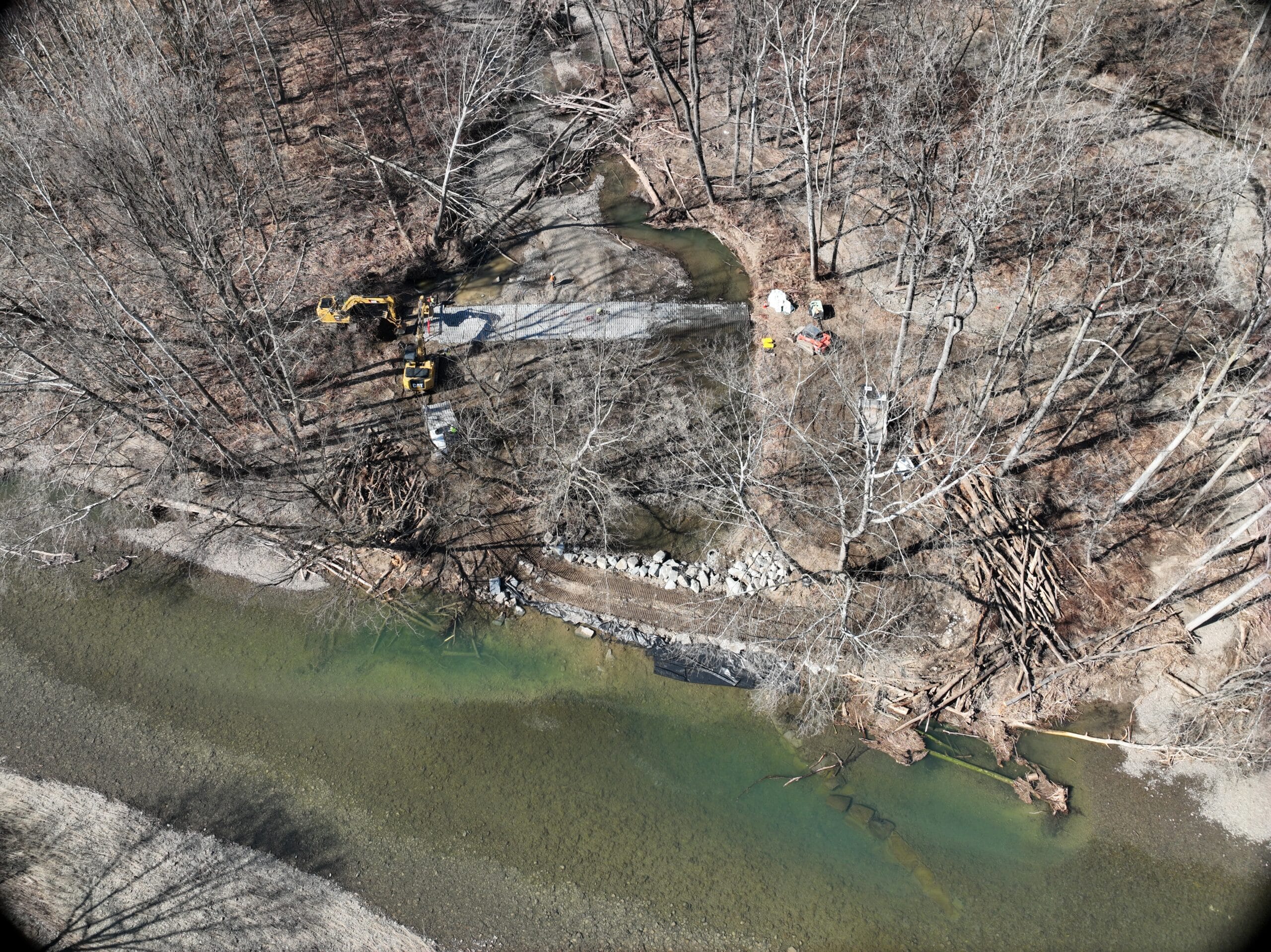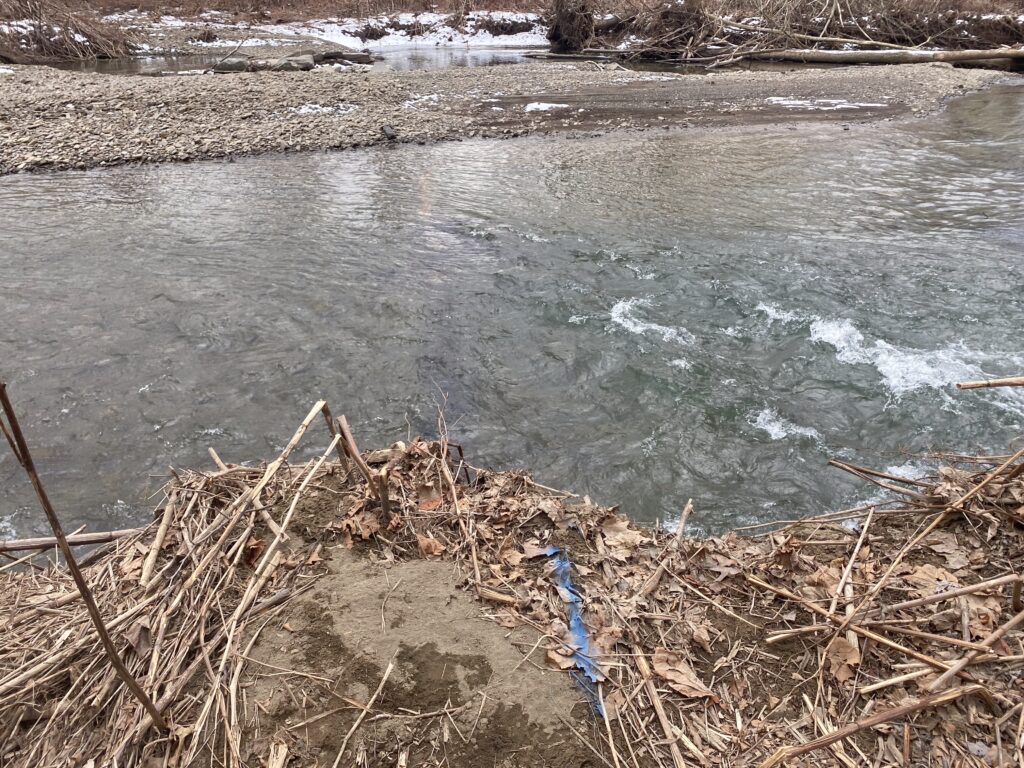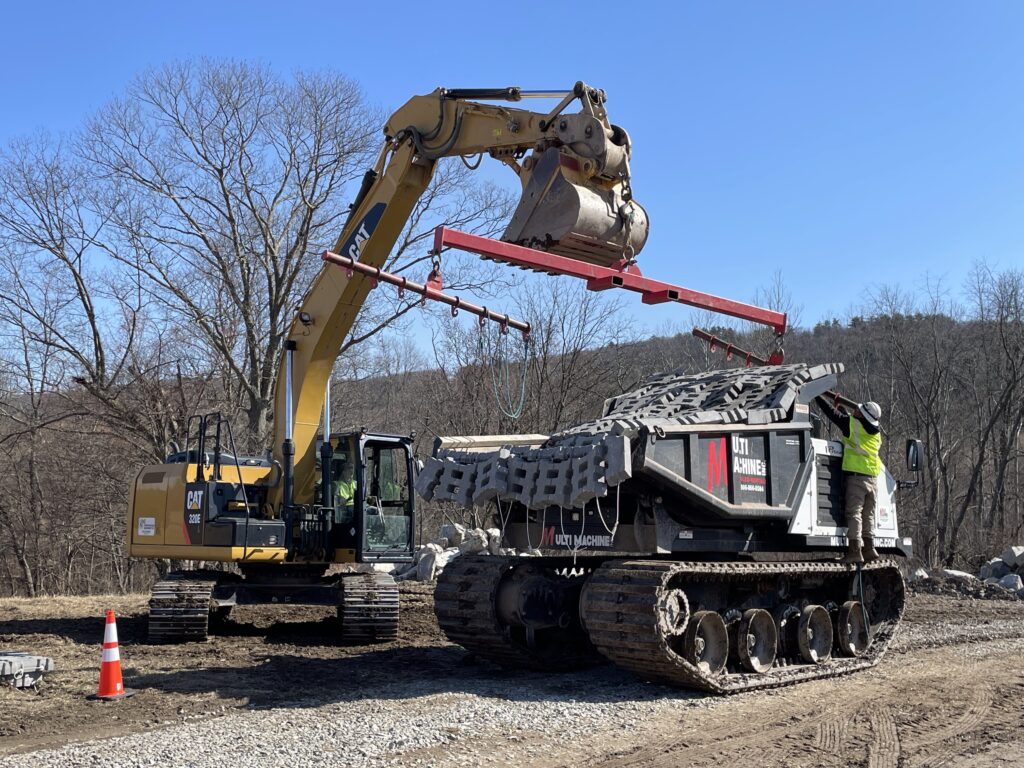
The Cargill Taylor Beef manufacturing plant In Wyalusing, PA is a cornerstone of the local economy. When it was discovered that the plant’s main water line in Wyalusing Creek was compromised, it quickly became clear that the plant’s operation was at risk. Immediate intervention was needed.
Chris Karelus, JHA Utility Project Leader, explains the situation: “the creek has a lot of issues with water flow, fluctuation in the water levels. They can go very high, very low.” David Jones, Superintendent of Job Site Resources, JHA’s construction contractor for the project, adds that “a few years ago there was a flood, and it just broke out of the creek banks and created a fissure down through, started a new creek, which then exposed the pipe.”
“It was an exposed system,” Chris continues, “trees are known to float in high water conditions, and the client was concerned that anything hitting it could’ve taken it out of operation.”

The water line had to be secured quickly, not only to sustain Cargill’s operations but to prevent far-reaching consequences for the region. With a substantial number of employees depending on the plant a shutdown would have had a ripple effect on the region, affecting businesses and putting families at risk of economic hardship. “We don’t want people to be out of work,” explains Jones, “if that water line was to separate, the plant shuts down, and we have fourteen hundred to fifteen hundred people not working.”
With the severity of the situation clear, the JHA team set to work. The first step was holding an on-site meeting to assess the situation. The team then coordinated an emergency response plan, which included reaching out to various agencies for expedited permits. “We evaluated what the problem was,” explains Chris, “and we put in play an emergency response process. We brought all the agencies together. We refined the permit process. Got everything permitted within a few days of our field meeting. Within a week’s time, we had the job under construction and the contractor on board.”
With permits secured, the construction phase began. The initial task was to dewater the worksite, to provide a stable, safe area where workers could operate. Dewatering involved using a channel blocker that redirected water flow away from the site, creating dry working conditions and allowing crews to work safely and effectively.
The team then turned their attention to reinforcing the exposed water line with multiple layers of protection. A key protective measure was the application of an articulating concrete block mat (ACBM) over the water line. This mat, anchored into the ground, provides a solid protective covering for the pipe. Additionally, the team placed sandbags over the water line as an added buffer. The reinforcement strategy also included armoring the surrounding shoreline and stabilizing it against erosion to prevent exposure of the water line in the future.

The successful rapid-response project highlighted the excellent working relationship between JHA Companies and Job Site Resources, two companies with a track record of handling challenging infrastructure tasks. JHA has managed similar projects in the past, providing engineering, permitting, and construction management solutions, while JSR has built a reputation for reliable and efficient execution. “We’ve done work in the past with Chris,” explains JSR’s Jones, “and he knows our reputation. We get in, get out, do the job right and safe.”
“JSR is an excellent company,” adds Karelus. “We’ve had similar scenarios where exposed pipeline projects were brought to us as engineers, and we worked alongside JSR to get those projects remediated. We’ve had previous experience with the contractor and worked great with them.”
One of the most important aspects of the project was the effective communication and collaboration of the JHA team. According to Karelus, “the project team did an excellent job of communicating with our client, with the client agencies, and all the agencies that were involved in permitting. All our team members, Josh, Eric, myself, all had key communication components that made the job successful.”
The success of the project led Cargill to commission a second phase of work, this time with a long-term solution in mind. “Cargill was so impressed, they asked us to do a second phase to find a solution, so this wouldn’t happen in the future. It led to a subsequent project that we’re working on with them to relocate the water line.”
Reflecting on the project, Karelus feels that “the biggest accomplishment coming off of this project was to know that we served our client in a posthaste manner, in a situation where we were put in a pressure cooker. JHA was able to put everything aside and serve our client to the best of our abilities. I’m very proud of that. Very proud to be a member of a team that was able to serve a client that needed from us what most people thought could not have been done.”
